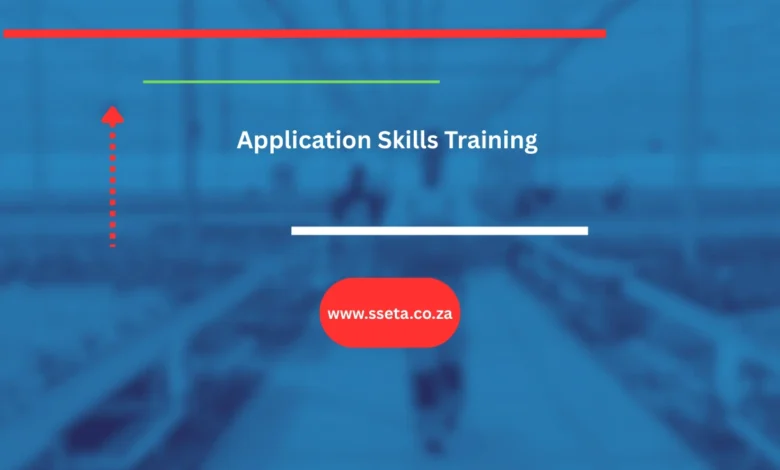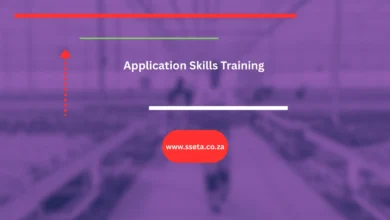Unlock Your Potential: A Complete Guide to Department of Higher Education and Training Opportunities Circular 29 of 2025

The journey of education in South Africa is one of transformation, progress, and opportunity. Every year, the Department of Higher Education and Training (DHET) releases its annual opportunities circular—a vital resource that opens doors for students, researchers, educators, and institutions.
Circular 29 of 2025 is more than just a policy document—it’s a roadmap filled with bursaries, research grants, skills development programmes, and institutional support.Department of Higher Education and Training Opportunities Circular 29 of 2025, Whether you’re a student seeking financial aid, a lecturer aiming for professional growth, or a university looking to modernise curricula, this circular provides guidance and resources to help you succeed.
In this guide, we’ll break down the circular into easy-to-understand sections. We’ll cover what it means, who it’s for, the opportunities available, and how to apply. By the end, you’ll have a clear understanding of how Circular 29 of 2025 can help you unlock your full potential.
Understanding the Role of DHET
The DHET plays a central role in shaping South Africa’s post-school education and training (PSET) sector. This includes:
- Universities – providing degrees and advanced qualifications.
- TVET Colleges – equipping learners with technical and vocational skills.
- Community Colleges – expanding access for adult learners and rural communities.
- Research and Innovation – supporting projects that advance knowledge and national priorities.
The department’s mission is simple: expand access, improve quality, and strengthen equity in education. Circular 29 of 2025 is one of the key tools DHET uses to achieve this mission.
Purpose and Objectives of Circular 29 of 2025
This circular isn’t just about funding—it’s about building a stronger, more skilled South Africa. Its main goals include:
- Increasing Access – ensuring more learners from diverse backgrounds can enter higher education.
- Supporting Completion – helping students not just start but also finish their studies successfully.
- Strengthening Research – investing in innovation that solves local and global challenges.
- Modernising Curriculum – keeping education relevant in the era of technology and globalisation.
- Empowering Staff – providing professional growth opportunities for lecturers and administrators.
Who Should Read This Circular?
The DHET designed Circular 29 of 2025 to benefit a wide audience:
- Students – looking for bursaries, NSFAS updates, or postgraduate funding.
- Researchers – seeking grants for impactful projects.
- Educators and Staff – needing professional development opportunities.
- Institutions – universities, TVET colleges, and community colleges wanting support for programme development.
- Industry Partners – businesses collaborating with academic institutions.
In short, if you are part of South Africa’s education ecosystem, this circular has something for you.
Key Opportunity Areas in Circular 29 of 2025
The heart of the circular lies in the opportunities it offers. Below are the main categories.
1. Bursaries and Financial Aid
Education can be expensive, and financial support often makes the difference between success and dropout. Circular 29 provides updates on:
- NSFAS (National Student Financial Aid Scheme): Expect updates on eligibility, application processes, and disbursement timelines.
- Field-Specific Bursaries: Dedicated funding for high-demand areas like engineering, medicine, education, and information technology.
- Equity-Driven Support: Opportunities for historically disadvantaged groups, rural learners, and women in STEM.
- Postgraduate Funding: Grants and scholarships for Master’s, PhDs, and postdoctoral studies.
Tip: Start preparing your documents early—certified copies of ID, proof of income, and academic transcripts are almost always required.
2. Research and Innovation Funding
South Africa thrives when research connects to real-world needs. Circular 29 outlines funding for:
- National Priority Research Grants – projects that tackle health, energy, environment, and economic development challenges.
- Innovation Hubs and Incubators – support for turning academic research into businesses and products.
- Collaboration Grants – encouraging partnerships between institutions, as well as international research collaborations.
Visual Aid Suggestion: An infographic showing how research funding flows from DHET → Institutions → Projects → Communities.
3. Curriculum Development and Programme Support
Education must adapt to changing industries. The circular provides resources for:
- Curriculum Modernisation – updating outdated programmes with technology and workplace-aligned skills.
- New Programme Development – support for creating courses in fast-growing fields such as renewable energy, AI, and cybersecurity.
- Quality Assurance – funding for accreditation, audits, and continuous improvement of learning programmes.
4. Professional Development and Staff Training
Behind every successful student is a dedicated educator. The circular highlights opportunities for:
- Faculty Development Grants – covering workshops, training, and academic conferences.
- Leadership Training – preparing university and TVET leaders to manage institutions effectively.
- International Exchange Programmes – enabling staff to learn new teaching practices abroad.
Visual Aid Suggestion: A map highlighting exchange programmes with partner countries.
Department of Higher Education and Training Opportunities Circular 29 of 2025
Eligibility Criteria and Application Guidelines
Understanding what’s required is crucial. Here’s a breakdown.
General Requirements
- Citizenship: Most programmes are for South African citizens or permanent residents.
- Academic Merit: Good grades are often a requirement.
- Institutional Affiliation: Applicants must usually be registered with a recognised institution.
Application Process
- Find the Right Opportunity – read the circular carefully.
- Prepare Your Documents – ID, transcripts, financial proof, and motivation letter.
- Apply Online or Via Institution – depending on the programme.
- Meet Deadlines – late applications are rarely accepted.
Tips for Success
- Personalise your motivation letter to match the programme’s goals.
- Seek guidance from your institution’s financial aid or research office.
- Keep a calendar of deadlines to stay organised.
Real-World Impact of DHET Opportunities
These circulars have already changed thousands of lives. For example:
- Students who couldn’t afford tuition have completed degrees through NSFAS.
- Researchers have developed innovations that improved water management in rural areas.
- Institutions have launched new programmes that prepare learners for future industries.
Visual Aid Suggestion: A success story feature box with a student’s journey from NSFAS funding to graduation.
Contribution to South Africa’s Development
The opportunities in Circular 29 align with national priorities like:
- Job Creation – by funding skills in high-demand sectors.
- Innovation-Driven Growth – supporting research that leads to new industries.
- Social Equity – making sure education is accessible for all communities.
- Global Competitiveness – preparing South Africa to thrive in a global knowledge economy.
How to Access Circular 29 of 2025
- Visit the DHET official website under the “Publications” or “Announcements” section.
- The circular is usually a downloadable PDF.
- Stay connected via DHET’s official social media channels for updates.
Key Takeaways for Different Audiences
- Students: Focus on bursaries, NSFAS, and postgraduate funding.
- Researchers: Explore grants and collaboration opportunities.
- Institutions: Look into curriculum development and staff training support.
- Educators: Apply for faculty development and exchange programmes.
Plan Ahead: Proactive Engagement
Don’t wait until deadlines approach. Start now by:
- Reviewing previous circulars to understand the application style.
- Preparing your documents before the circular release.
- Talking to mentors or administrators about opportunities that match your goals.
Conclusion
The Department of Higher Education and Training Opportunities Circular 29 of 2025 is a gateway to growth. It empowers students to study, researchers to innovate, and institutions to thrive. By exploring its opportunities, preparing your applications carefully, and acting early, you can secure the support you need for your education or career.
Your next big step could be waiting in the pages of Circular 29 of 2025—all you need to do is unlock it.
Suggested Visuals for Your Website Version:
- A banner image of students graduating.
- Infographics for bursaries, research funding, and staff training.
- Quote boxes highlighting success stories.
- Icons for application tips and eligibility criteria.

